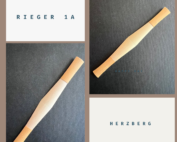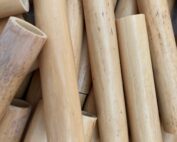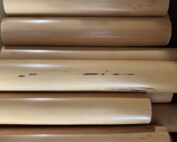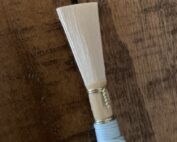
Bassoon & Contrabassoon
High quality, hand made bassoon reeds and contrabassoon reeds & accessories.
The bassoon is a woodwind instrument in the double reed family that plays music written in the bass and tenor clefs, and occasionally the treble. Appearing in its modern form in the 19th century, the bassoon figures prominently in orchestral, concert band, and chamber music literature. It is known for its distinctive tone colour, wide range, variety of character, and agility.
Bassoon reeds are made from a common species of grass called Arundo Donax, or giant cane. This strong, lightweight fibrous plant has been used in a variety of applications and can grow to more than 30 feet tall! For bassoon reeds, the cane is harvested from plants at least 60 years old, with an outside diameter of about an inch.
Shop Bassoon Reeds
Explore our selection of high quality, hand made bassoon and contrabassoon reeds and cane.
Shop Bassoon Reed Cases
Explore our selection of high quality bassoon and contrabassoon accessories including reed cases, package sets and more.
Shop Reed Making Tools
Explore our selection of high quality, bassoon and contrabassoon reed making tools and cane.
Shop Bassoon Accessories
Explore our selection of high quality bassoon and contrabassoon accessories including reed cases, package sets and more.
The Bassoon
Double Reeds and Accessories from Singin’ Dog
 Bassoon reeds are made from a common species of grass called Arundo Donax, or giant cane. This strong, lightweight fibrous plant has been used in a variety of applications to include furniture, bicycle frames, fishing poles and scaffolding. Giant cane can grow to more than 30 feet tall! For bassoon reeds, the cane is harvested from plants at least 60 years old, with an outside diameter of about an inch. The bassoon reed is made from a five inch long piece of tube cane, which is split into four sections. One of these pieces is then gouged, shaped, profiled (or scraped) across the center to remove bark and thin the reed, and folded end to end upon itself. The two ends of the folded cane are formed together into a small tube using pliers and a bassoon reed mandrel. The tube section of the reed is held together using three brass wires, and is usually covered with a decorative and airtight coating of thread or plastic. A tapered reamer is used to assure the tube’s snug fit onto a bocal and the fold at the end of the profiled section is clipped off to create two opposing reeds. These double reeds are then scraped even more until quite thin, using a reed knife so that they will buzz against each other easily when air is blown between them. The buzzing reeds vibrate the column of air within the bassoon to produce a tone. The highest quality bassoon reeds are hand made by experienced bassoonists using tools and practices passed down over hundreds of years.
Bassoon reeds are made from a common species of grass called Arundo Donax, or giant cane. This strong, lightweight fibrous plant has been used in a variety of applications to include furniture, bicycle frames, fishing poles and scaffolding. Giant cane can grow to more than 30 feet tall! For bassoon reeds, the cane is harvested from plants at least 60 years old, with an outside diameter of about an inch. The bassoon reed is made from a five inch long piece of tube cane, which is split into four sections. One of these pieces is then gouged, shaped, profiled (or scraped) across the center to remove bark and thin the reed, and folded end to end upon itself. The two ends of the folded cane are formed together into a small tube using pliers and a bassoon reed mandrel. The tube section of the reed is held together using three brass wires, and is usually covered with a decorative and airtight coating of thread or plastic. A tapered reamer is used to assure the tube’s snug fit onto a bocal and the fold at the end of the profiled section is clipped off to create two opposing reeds. These double reeds are then scraped even more until quite thin, using a reed knife so that they will buzz against each other easily when air is blown between them. The buzzing reeds vibrate the column of air within the bassoon to produce a tone. The highest quality bassoon reeds are hand made by experienced bassoonists using tools and practices passed down over hundreds of years.








